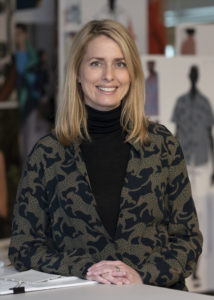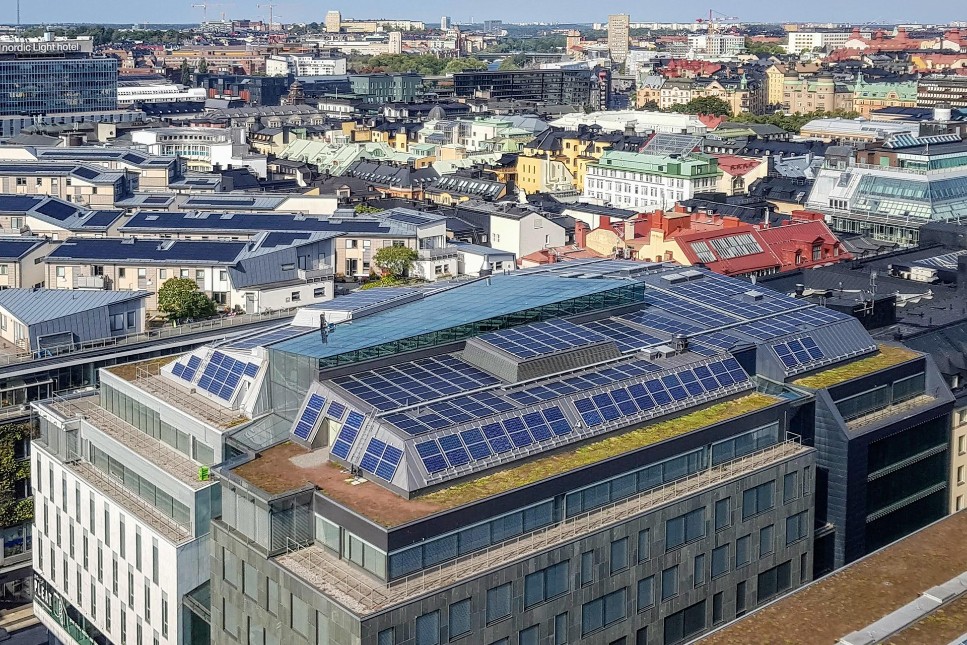H&M Group CEO: Our mission is to make sustainable fashion accessible to all
By Charlotte Owen-Burge | October 11, 2021
In a world of chronically limited resources, it might seem paradoxical for a fast fashion company to call itself sustainble. But in the case of Swedish multinational clothing company, H&M, it’s an authentic claim.
Not only will the Race to Zero member be net zero long before 2050, its aim is to become circular and climate positive by 2040. This means its products will never become waste and before long it will remove more greenhouse gas emissions from the atmosphere than its value chain emits. Charlotte Owen-Burge spoke to H&M Group President and CEO, Helena Helmersson to find out what this entails in practice.
Charlotte Owen-Burge: What actions is H&M taking right now — not in 10, 20 or 30 years time — to tackle the climate crisis?
Helena Helmersson: The science is clear, business as usual is not an option and the pace we had in the past, cannot be the pace in the years to come. Bold ambitions are of great importance now that we have the opportunity to collectively rethink our industry and the system behind it. However, we must focus more on actions and progress.
We have recently set up a Green Investment team whose main task is to reduce our emissions in the most cost-efficient way and Energy Efficiency teams that will help the suppliers transition to renewable energy.
We have also issued a sustainability-linked bond at the beginning of this year, which is coupled to the company meeting a number of defined sustainability targets, such as: increase the share of recycled materials used to 30%, reduce emissions from the Group’s own operations by 20% and reduce absolute Scope 3 emissions from fabric production, garment manufacturing, raw materials and upstream transport by 10% by 2025.
We invest in new business models in which fashion never goes to waste, such as rentals, subscriptions and re-commerce as well as new garment-to-garment recycling technologies. We see great breakthroughs in textile recycling technologies that we are testing for our further use of recycled materials and have made a number of investments in recycling of post-consumer fabric. We are now developing and scaling up these investments and this is really what we see as one of the solutions going forward. It is going to be a big tipping point for the whole fashion industry.
One example of how we partner up and invest to scale innovations in materials, is our work together with Renewcell to increase the use of its Circulose® (material made from recycled cotton waste) to accelerate the development. Last year, H&M’s Conscious Exclusive collection featured the newly patented material Circulose®, marking the first time the material was used in garments sold at scale.
Another example is when one of our portfolio brands Weekday created a collection (launched in February 2021) using Infinna™, an MMC fibre from regenerated cotton waste, developed by Infinited Fiber Company with support from our Circular Innovation Lab.
We recently implemented internal carbon pricing, which will help to quantify costs for the emissions from the different decisions taken by the group – for instance when designing, producing and selling a product. By directly connecting emissions to a price on carbon, product developers at H&M Group can make more informed decisions.
The purpose is to visualize the impact from materials, production and mode of transport. Those three stand for about 70% of our total emissions so we chose to start with that. It’s built to support our buying organization on their journey to a long-term adjustment. This is not a quick fix, the tool is first of all designed to raise internal awareness, improve measurability and change behavior over time. Our newest packaging initiative is another important step towards becoming circular and climate positive. Swapping single-use plastic for more sustainable paper for online orders means we can get our products to our customers without using plastic that is not always recyclable.
Products can be packed with minimum air, so they take up less space during transport. And once customers receive their product safely, they can easily recycle the packaging. Last year we reduced our packaging by 14% including 24% less plastic packaging.

H&M Group President & CEO, Helena Helmersson. Image: H&M
Our Circular Innovation Lab joined forces with bioMASON and used their bioLITH brick made by microbes, instead of using cement. This results in a much lower climate impact. The brick was tested during an office renovation in February 2021.
We also work a lot with emerging tech like Advanced Analytics and AI to better predict what our customers want, make better decisions and produce what we can sell and, in that way, move towards a more demand-driven, rather than supply-driven business model.
Why is it important for your company to transition to net zero?
The reality we continue to face is that we are living on a planet with limited resources, threatened by a climate crisis and increasing waste. The industry can’t continue in the same way – to us it is clear that the way we produce and consume has to change. As a global fashion retailer, H&M Group has a big role to play, and this is the reason why we are transforming our business to become circular and climate positive. We need to make sure that we only produce what we can sell and that what we sell has been sourced and produced in a more sustainable way.
We are determined to be part of the solution, but to achieve systemic change, industry wide collaboration will be key and a joint commitment to take action to limit global warming in accordance with the Paris Agreement goals.
We are in a critical decade for climate action, and we need everyone to contribute to tackling the climate crisis — governments, businesses and individuals — all have a role to play. We need to collectively step up. Although there are positive movements, it’s not going fast enough.
Do your plans go beyond net zero?
Yes, our goal to become climate positive by 2040 goes further than net zero. We have also committed to reduce 56% of our absolute emissions by 2030 with the base year of 2019. That is also much more ambitious than a net zero goal.
What are the challenges of a net zero transition and how are they being overcome?
One of the biggest challenges on our path towards becoming climate positive is that the majority of our supply chain is located in countries where the energy is still based on fossil fuels. Tackling that goes way beyond what one single company can do, and really requires collaboration both within and outside the industry to affect political leaders and decision makers.
We work with others to improve efficiency and reduce emissions across shared transport supply chains. H&M Group is a member of the RE100 – a global initiative of businesses that are committed to 100% renewable electricity. In 2020, 90% of electricity purchased for our operations was renewable. To achieve our 100% goal, we will continue to work with the criteria set by the RE100.

Solar panels at H&M’s Head Office, Stockholm. Image: H&M.
What are the cultural and competitive impacts of a net zero pathway?
A net zero pathway pushes companies in the right direction since you really need to align your sustainability strategies to science. We regard sustainability as fundamental to our long-term business success. Having a strategic sustainability agenda is business critical today. It’s something that will be required of all companies that want to be competitive in the future.
We’re also exploring new business models, trying new materials and processes and collaborating with others to re-invent the fashion industry. And we believe that by taking a lead and embedding sustainability throughout our culture, values and business, we will create a positive impact on people and planet and at the same time a better customer offer for all our brands.
The interest in sustainability has increased for several years now and has been accelerated even more by the pandemic. We are happy to see that, since we cannot do this journey without having our customers onboard.
We are a long-term company that wants to serve customers for generations to come. Climate change is our biggest challenge, and the success of our ambition will decide our ability to grow and attract future talents and customers.
Is fast fashion the enemy of sustainability?
If you think of a business model that is based on the concept of wear-out and throw-away, then yes, that is unsustainable. This is not what we stand for. We do not want to contribute to a throw-away attitude.
Whether or not ‘fast fashion’ is sustainable depends on your actions as a company and our position is clear. We can see that we really need to transition from the linear production models we have today towards more resilient and circular ones. To us, being circular means having a different approach to how fashion is designed, made and used. For instance, the most instant impact our decisions are having is connected to our choice of materials. One of our goals is to use 100% recycled materials or materials sourced in a more sustainable way by 2030. Last year we achieved 64.5%.
But we must innovate not only materials and processes, but also business models and new ways for people to experience fashion and design, so it never becomes waste, but instead reused and recycled again and again. This is also the base for our most ambitious goal – to become climate positive by 2040.
We believe the key is to mainstream sustainability, to scale things up by finding clever solutions to make things sustainable yet affordable for the many. Our mission is to make sustainable fashion accessible to all.



